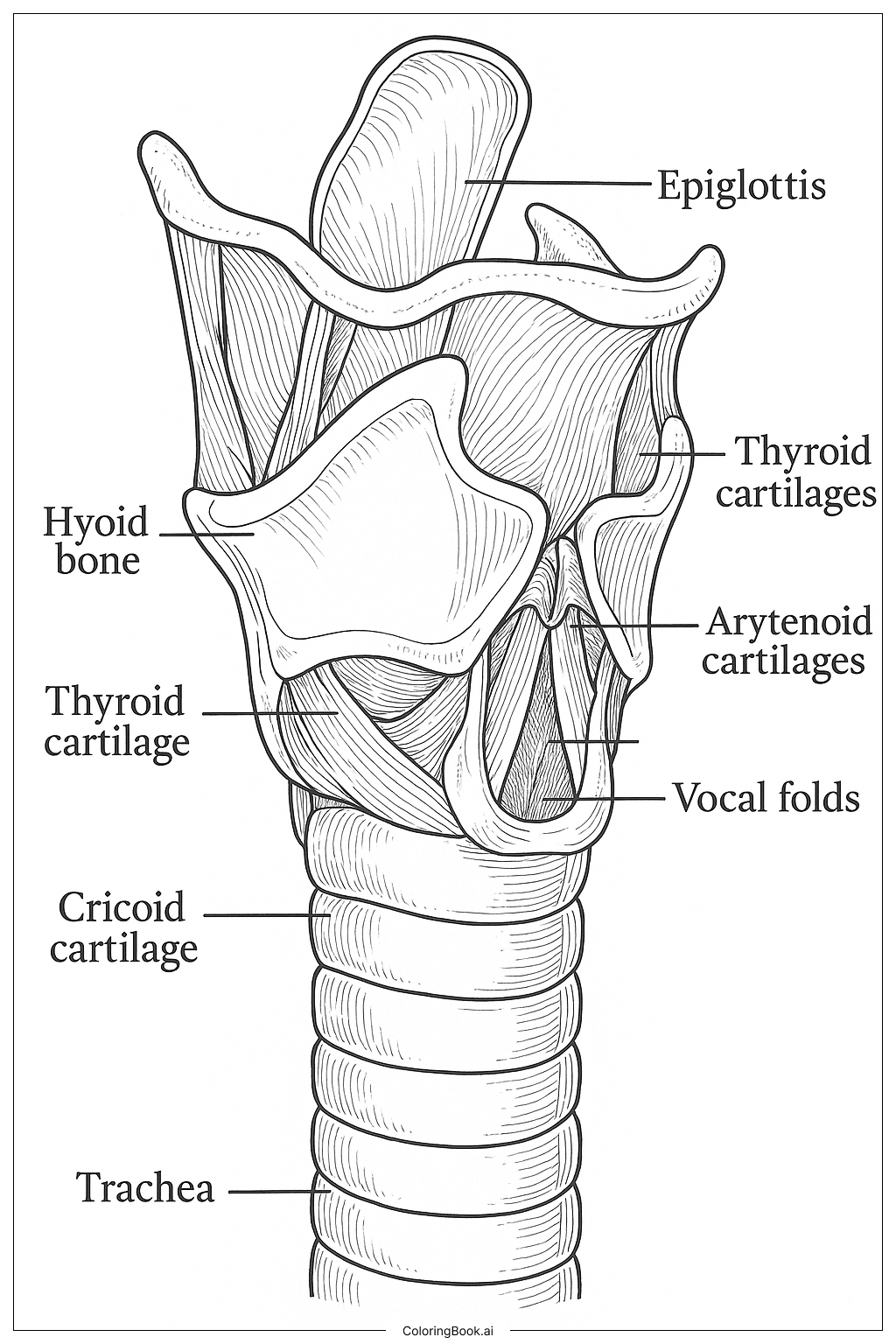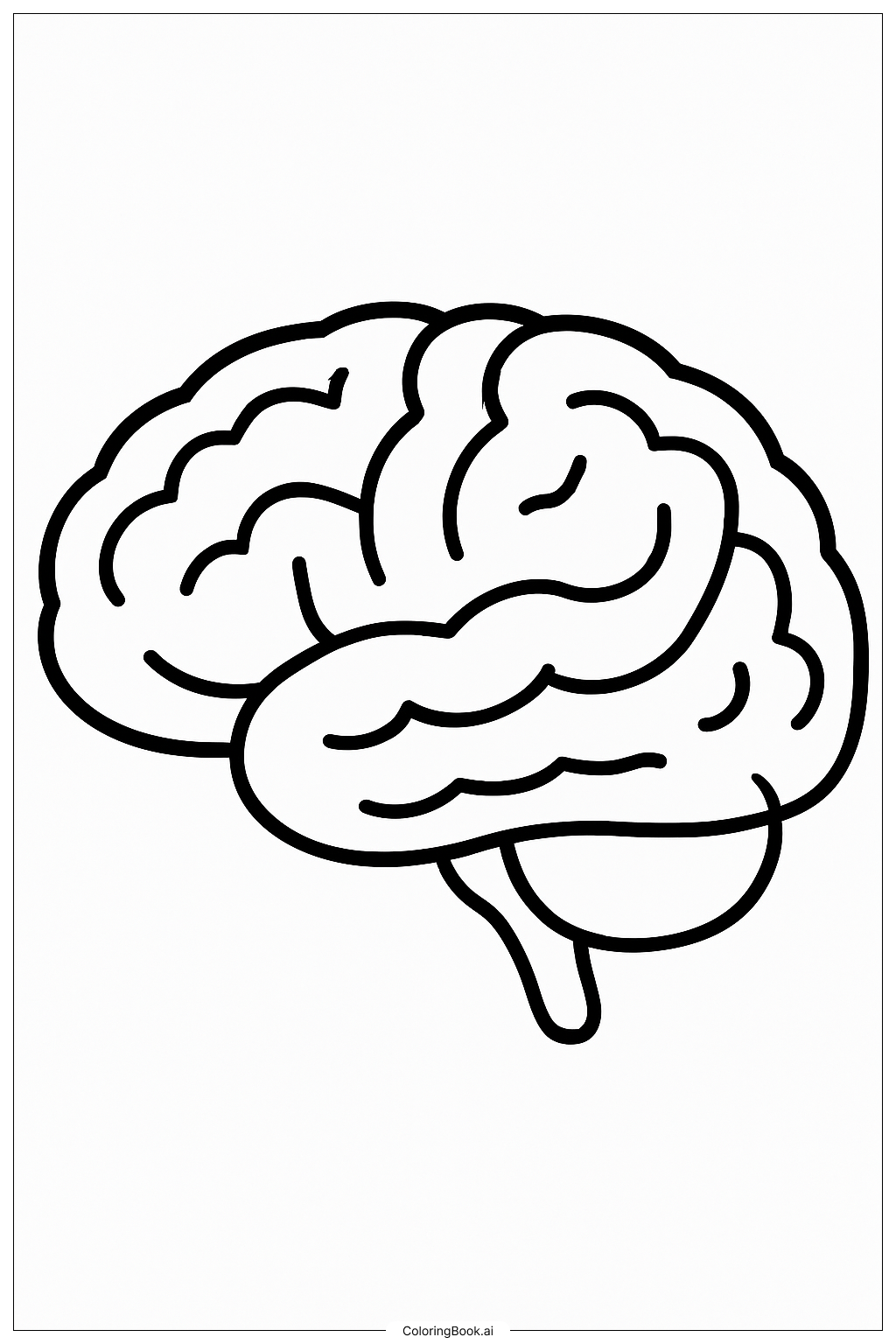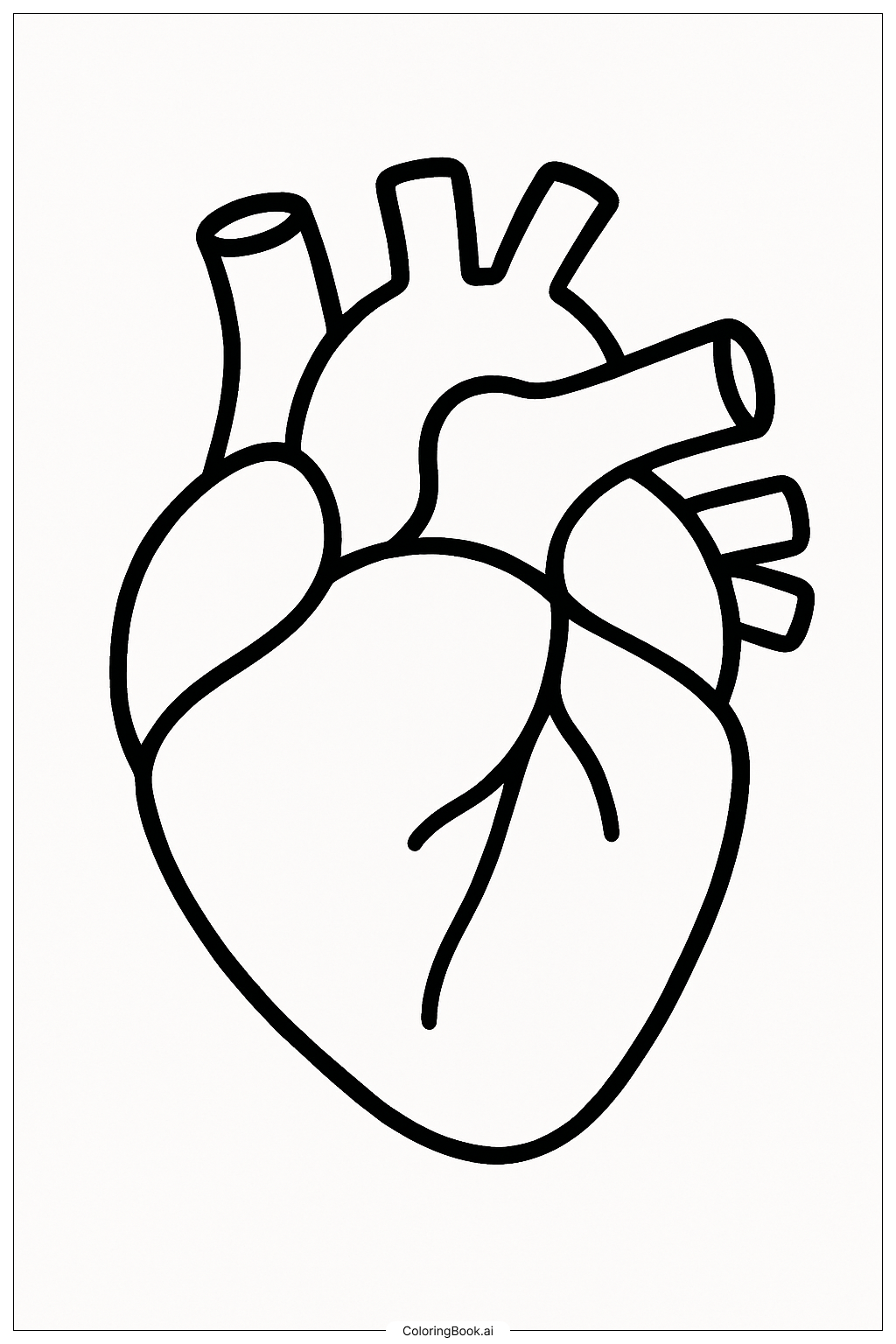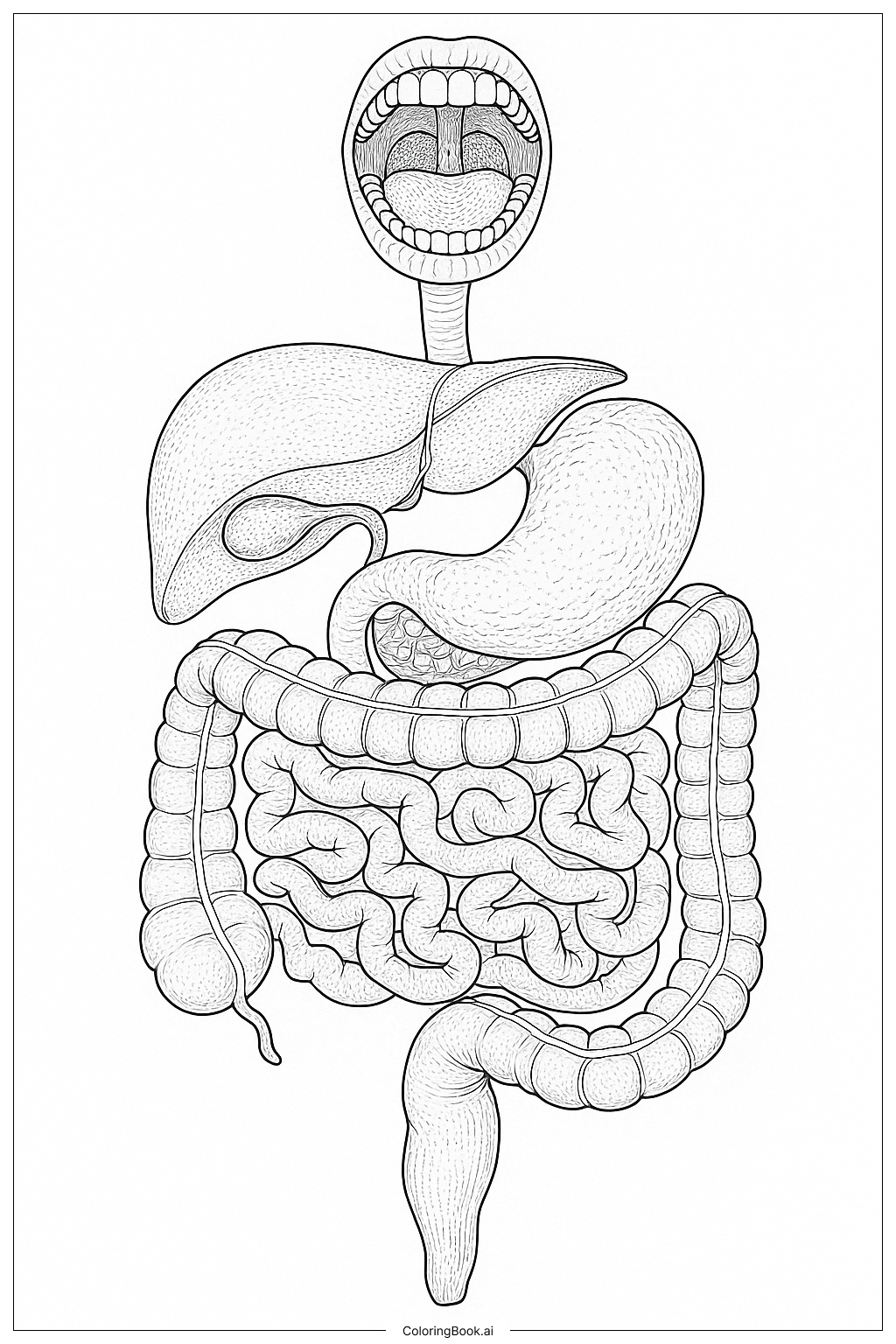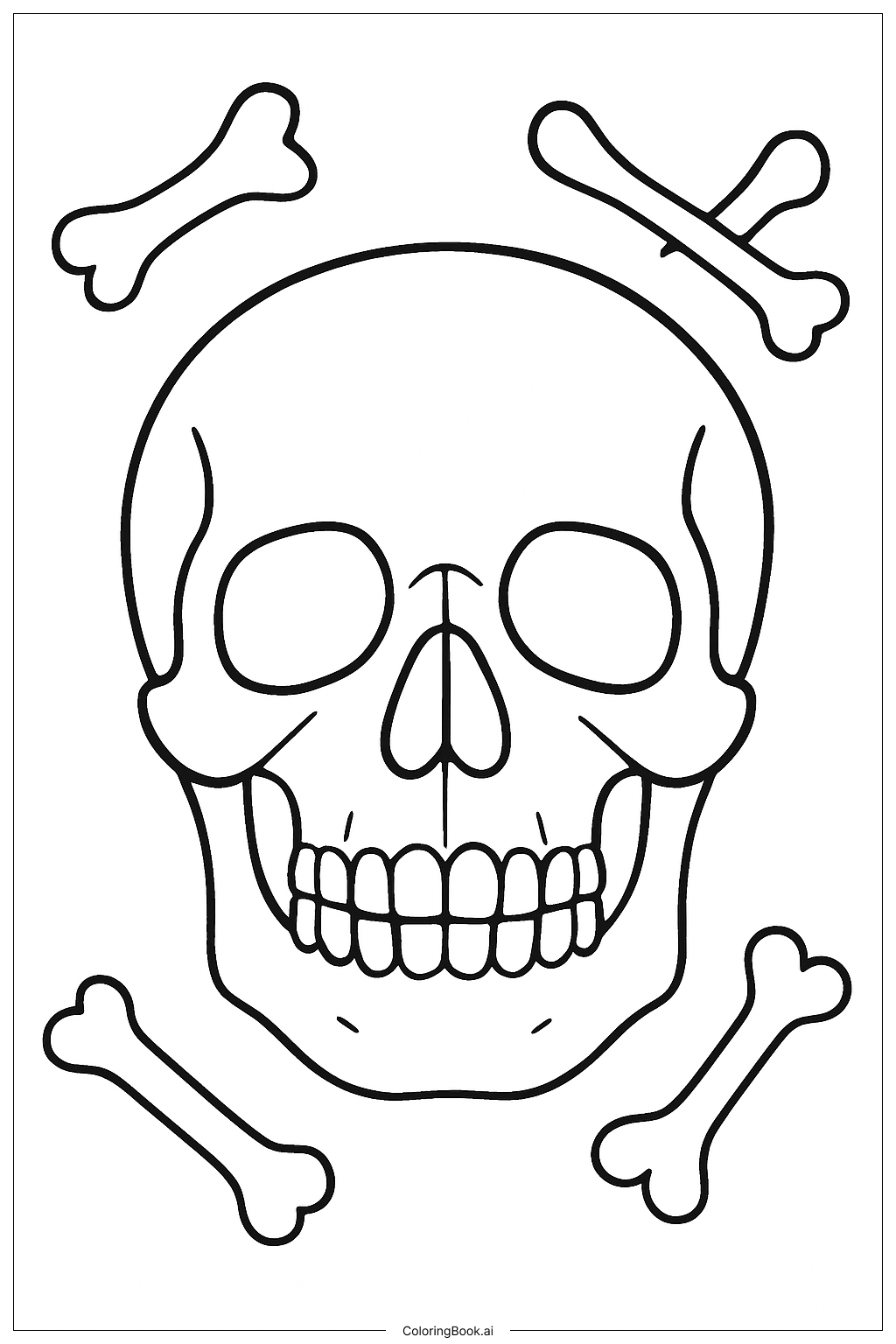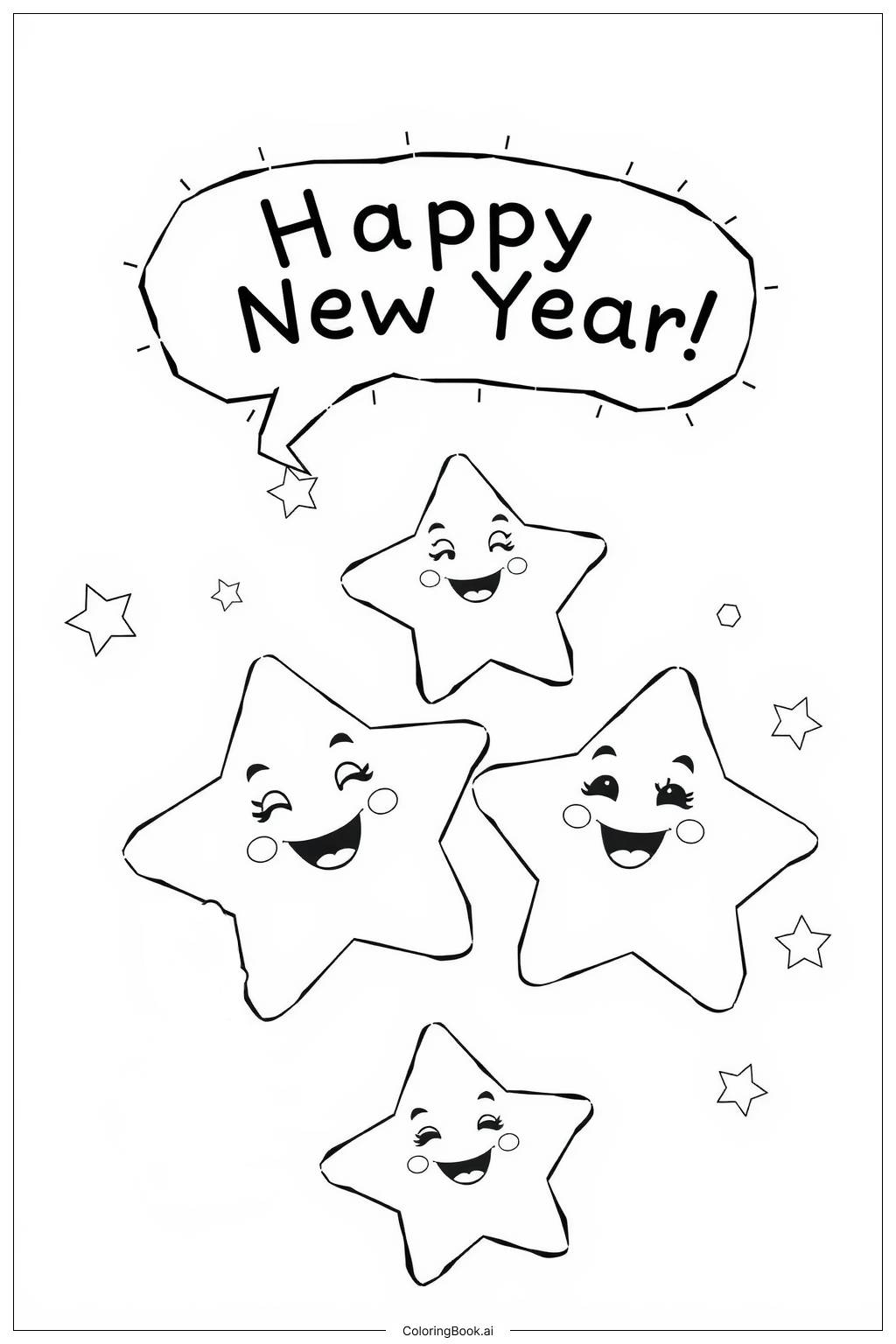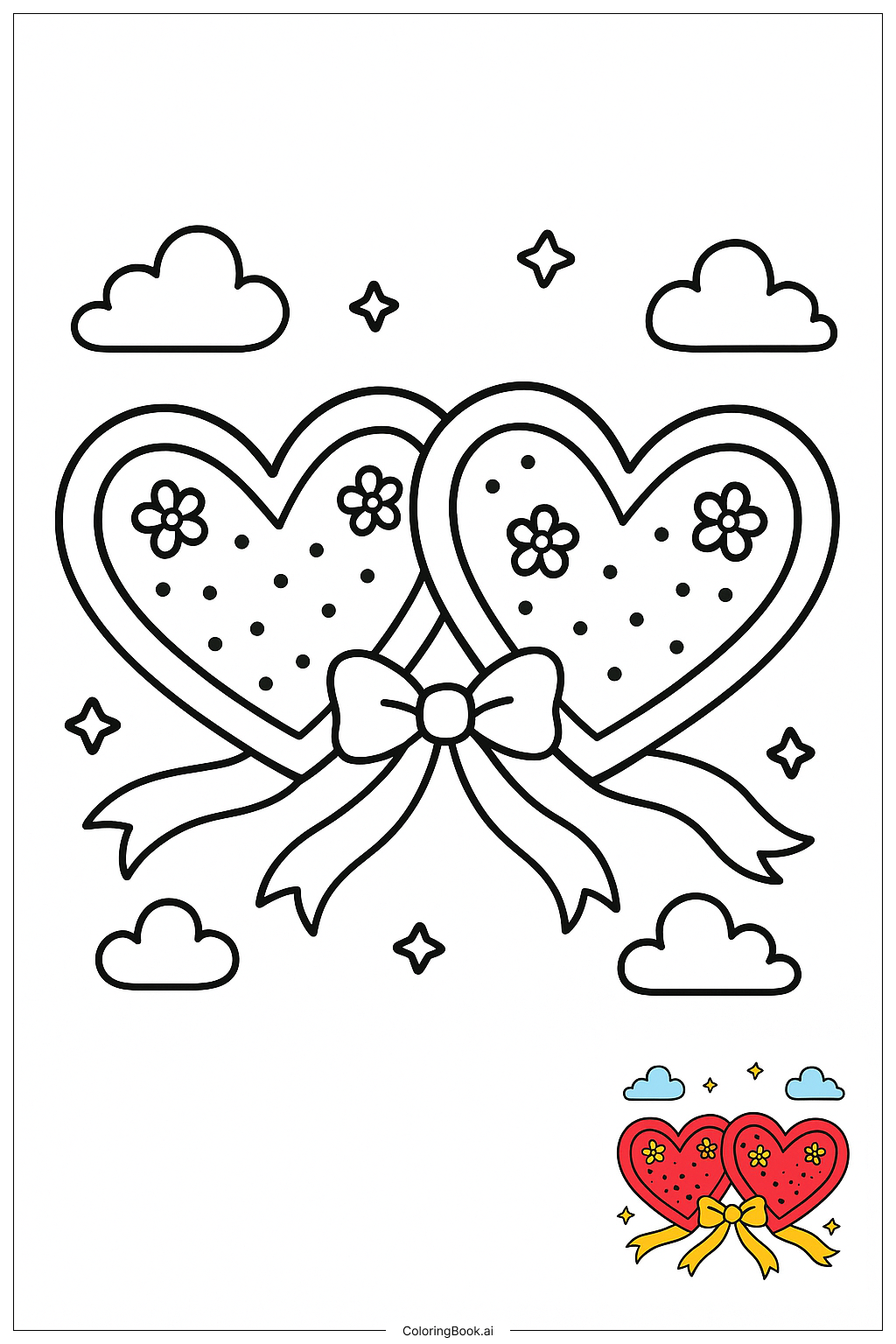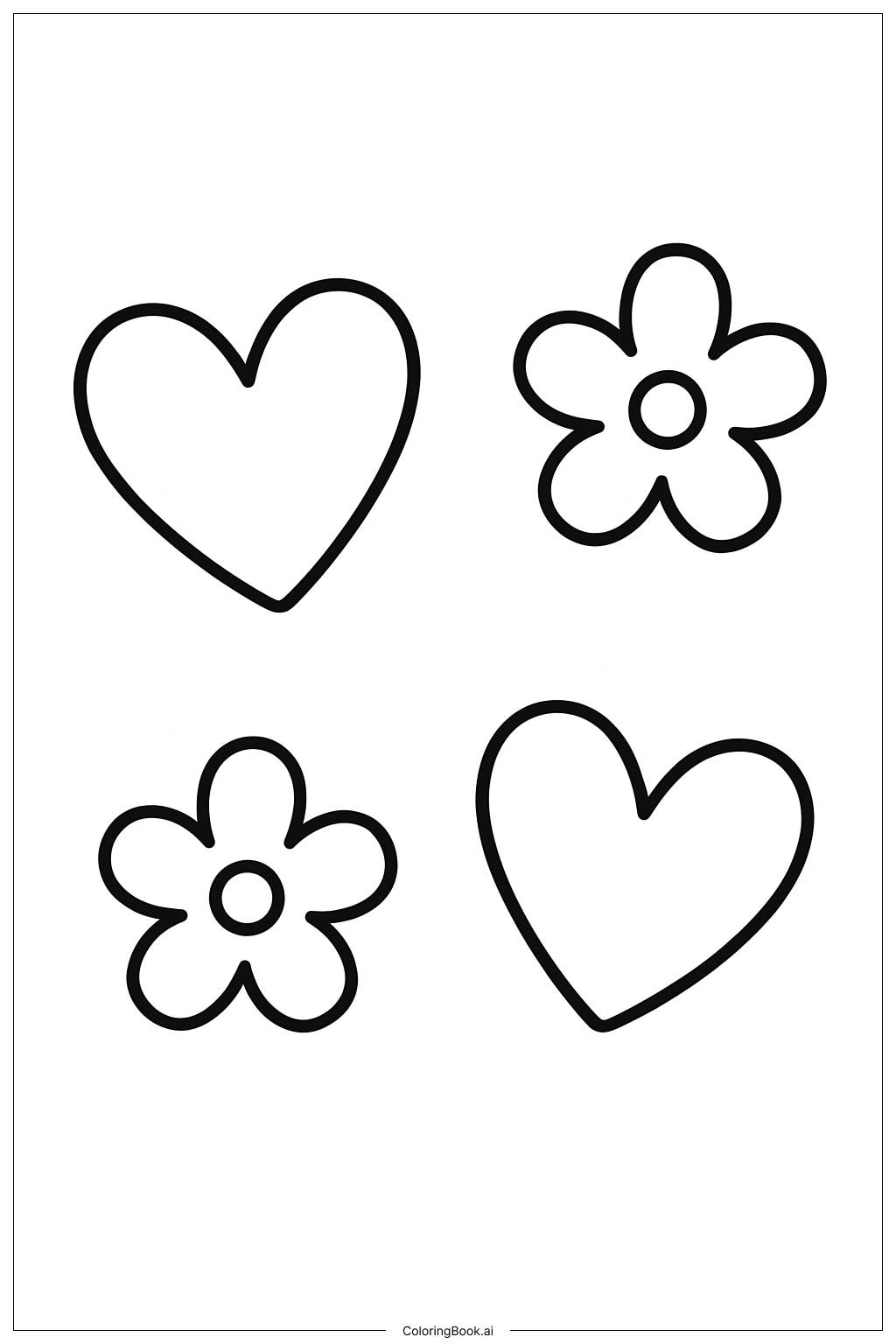Coloring tips: How to color Anatomy Of The Larynx And Vocal Cords coloring page well?
For coloring, use different shades for each part to make them stand out. For example, try light blue or green for the epiglottis and hyoid bone. Use different warm colors like orange, red, or yellow for the thyroid and cricoid cartilages. The vocal folds can be colored in a light pink or purple to highlight their importance. You can also shade the trachea with a calm blue or gray. Try to color inside the lines carefully and use soft strokes for the smaller areas.
Coloring challenges: Which parts are difficult to color and need attention for Anatomy Of The Larynx And Vocal Cords coloring page?
1. Small spaces: Some parts like the arytenoid cartilages and vocal folds are small and need careful coloring to avoid going outside the lines. 2. Similar shapes: The thyroid cartilage and thyroid cartilages look alike, so it's important to choose different colors to tell them apart. 3. Curved lines: Many parts have curved lines and textures which can be tricky to follow and color neatly. 4. Shading: The image has some detailed shading that shows depth, so trying to imitate this effect might be challenging. 5. Labels: There are many text labels near parts to explain them, so be careful not to color over the words.
Benefits of coloring books: Advantages of drawing Anatomy Of The Larynx And Vocal Cords coloring page
Coloring this picture helps improve hand-eye coordination and fine motor skills by staying inside small spaces and following curves. It also boosts learning about the human body, especially how the voice is made. This activity can spark curiosity about medicine and biology. Coloring different parts with unique colors makes it easier to remember their names and functions. It can also calm the mind and encourage focus, making learning fun and relaxing.
